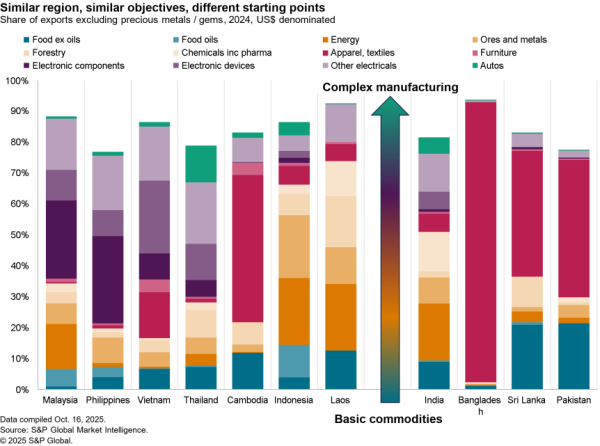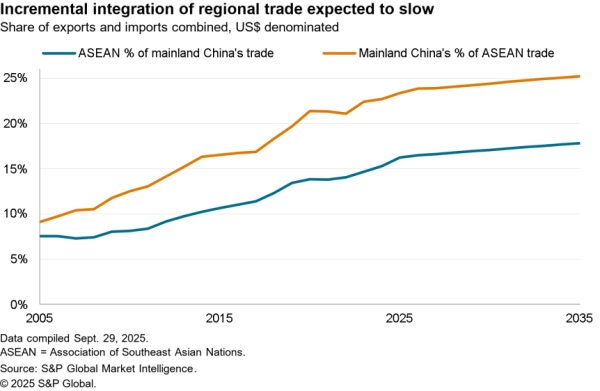Panjiva Research held a webinar on Oct. 20 to discuss our Q4’20 Global Supply Chain Outlook. This report addresses the key points and a selection of questions raised during the event. A full playback and the presentation pack can be found here.
The bulk of the event focused on our key themes for Q4’20 including the impact on global supply chains of COVID-19, prospects for U.S. trade after the elections, the drivers of onshoring policies and the impact of ongoing Brexit negotiations.
Global supply chains remain in the grip of the disruptions caused by COVID-19 and are currently in the third stage of development represented by the uneven reopening of supply chains. A surge in U.S. seaborne imports represents a mixture of drivers including the anticipation of an earlier-but-flatter peak shopping season and a recovery of industrial supply chains.
In common with prior webinars we asked participants “When do you expect business to return to normal after COVID-19?“. None of the respondents expect a return to normal this year, while 40.3% see a return during 2021 and the remaining 59.7% expecting it to take at least until 2022, if at all.
That represents yet another shift in the bow-wave of recovery expectations compared to our prior webinars, the most recent on Oct. 8 of which saw 51.1% expect a 2022-or-beyond recovery.

Source: Panjiva
Q: Trump just launched a trade investigation of Vietnam – why, what might happen and who may be hurt? Are there other countries that manufacturers could move to besides Vietnam?
The investigation of Vietnam has been a long time coming. As outlined in our Oct.5 analysis the country has seen one of the fastest growing trade surpluses with the U.S. with an increase to $58.3 billion in the 12 months to July 31 from $32.3 billion in 2016.
That’s largely been down to the relocation of manufacturing operations across furniture, apparel and consumer electronics from China in response to the Trump administration’s section 301 duties. It’s unlikely that conclusions will be reached before the elections, making the outcome a function of a result.
On the basis of shifting exports of electricals and electronics, represented by HS 85 in aggregate, Vietnam has come to represent 6.6% of total U.S. imports in the 12 months to Aug. 31 compared to 3.3% in 2016, Panjiva data. That compared to, and offsets most of, the drop to 34.7% from 39.1% experienced by China.
Other countries with a marked increase in share are Taiwan which increased to 5.3% from 4.2% and Malaysia which rose to 8.0% from 7.4%. India has also begun to pick up market share though has only increased to 0.8% from 0.4%. Shipments from Mexico and Canada as well as South Korea have actually declined despite the passage of USMCA and KORUS.
The conditions for shifting supply chains of course are a function of more than just tariffs and include labor costs and conditions, regulatory standards, transportation costs and extant upstream supplies of parts.

Source: Panjiva
Q: You talked about the differences between Biden and Trump, what about Brazil?
The U.S. and Brazil have held extensive talks under the Trump and Bolsonaro administrations. So far that has yielded a short term deal on ethanol and another to update their 2011 Agreement on Trade and Economic Cooperation to include new chapters on customs procedures, regulatory developments and anti-corruption.
While the deal may help facilitate trade it is a long way from the tariff- and goods-based deals that the Trump administration have signed so far. A full trade deal had not been practically possible in any event as the administration did not have TPA approval for such an agreement. In any event there are few obvious areas for significant tariff reductions.
The new deal also includes financing support for Brazilian investments in telecoms, Reuters reports, where the U.S. is keen to prevent Chinese hegemony in 5G networks. Panjiva’s data shows that China accounted for 78.1% of Brazilian imports of all telecoms equipment in the 12 months to Aug. 31 after climbing 11.3% higher in the past three months. U.S. supplies meanwhile have jumped 29.7% higher over the same period but only represent 14.2% of supplies.
A Biden administration may take a very different stance, particularly given the Bolsonaro administration’s actions regarding deforestation and climate change more broadly. In any event Biden’s campaign has indicated that new deals are not an area of focus in the near-term, and TPA approval would be required against a July deadline.

Source: Panjiva
Q: With soaring container rates and a pickup in volumes presumably the logistics firms are making good money for a change. How do you think they will spend it? Will the fluid COVID-19 situation lead to continued higher shipping rates?
The surge in container shipping rates during late Q2 and early Q3 was driven by a high degree of capacity discipline on the part of the container-lines with blank sailings proliferating. A surge in traffic in late Q3 has been the result in part of retailers expecting an earlier / flatter peak shipping season combined with an ongoing industrial recovery.
Presuming that discipline remains and assuming no major downturn then rates could remain high. One area of caution though: in 2018 there was a surge in U.S. shipping ahead of tariff increases on shipments from China. Once that demand lessened there was a 16% drop in shipping rates in just four weeks.
There are few signs so far of significant new orders for shipping vessels, suggesting that the container lines don’t necessarily expect a higher-for-longer situation. Uncertainties over environmental policy with regards to shipping may be causing a pause too as liners consider whether to go straight to low-carbon vessels.
In the meantime we’ve seen a scaling up of investments in IoT tracking devices as well as improved visibility tools including shipping platform investments. Those are in part a defensive investment against the rise of virtual freight forwarders.
Q: Can you speak to global shifts to sustainable and ethical supply chains?
There have been some concerns that improvements in the ESG characteristics of supply chains have been put to one side during the pandemic. The good news is that the investments being made in improved visibility and resilience in supply chains will also serve a purpose once the distraction of the pandemic passes.
From an environmental perspective there have been plenty of announcements from firms looking to decarbonize their supply chains, including the Transform to Net Zero framework while – as flagged above – a new generation of shipping vessels are on the way.
In terms of social issues there has been a particular focus within apparel supply chains regarding the treatment of workers. A series of strikes regarding terms and conditions as well as challenges from cancelled orders during the pandemic have continued to keep a spotlight on the topic.
An emerging issue in supply chain welfare during the pandemic has been that of sailors that have had to take on shifts extended by months due to not being able to return home. The industry has struggled to get to grips with that topic, where the challenges are presented by government’s travel policies.
Q: What are the prospects for imports of products such as herbs or tea that are imported to the U.S. from China?
Few products have been immune from the U.S.-China trade war. Shipments of herbs and tea, covered by HS-09 of the tariff code, have become subject to tariffs as part of the list 4A group of duties that were applied initially at 15% in May 2019 before being cut to 7.5% as part of the phase 1 trade deal.
Panjiva data shows that there’s been a diverse performance between the subcategories. Imports of dried spices increased by 2.3% in the 12 months to Sept. 30 compared to 2017, while dried chili peppers fell by 1.5%. More recently a drop of 20.4% in spices and 5.3% in peppers may reflect changing consumer habits during the pandemic.
There’s also been a marked switch in imports between tea and coffee. U.S. seaborne imports of tea from China dropped by 24.2% in the past 12 months versus 2017 and dropped by 36.1% in Q3. Coffee by contrast has jumped by 80.0% in Q3’20 potentially reflecting a change in purchasing patterns by major coffee importers.

Source: Panjiva




